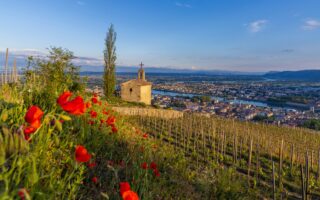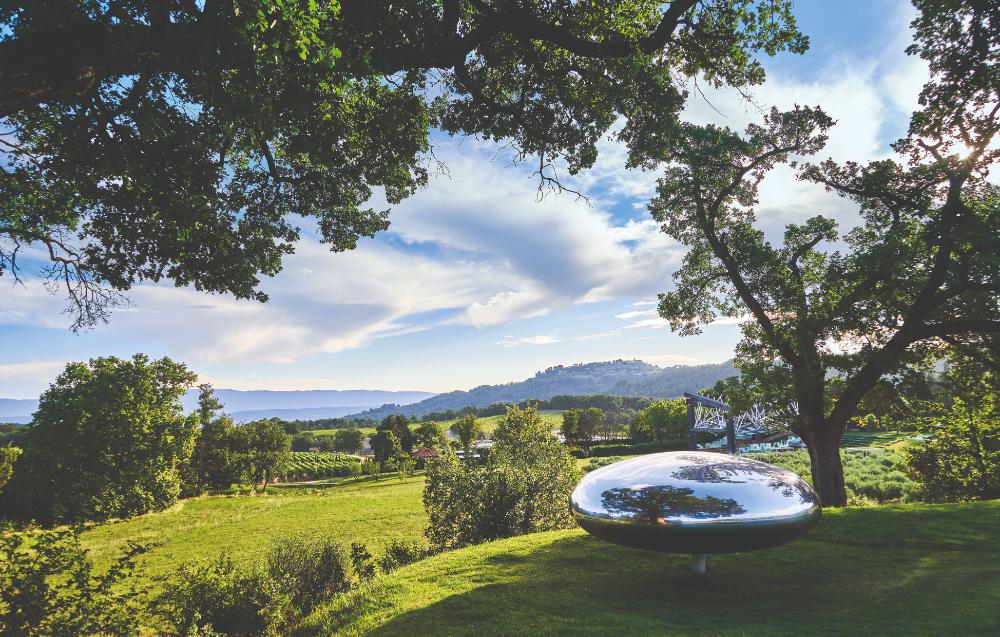
French wine and architecture: Chateau La Coste
Near Aix-en-Provence, Château La Coste, owned by Irishman Patrick McKillen and his sister Mara, combines wine and top-flight gastronomy with the world of art and architecture…
The day my sister Mara brought me to Château La Coste for the first time I was shocked. I was moved by the beauty and I knew it was a special place,” recalls businessman Patrick McKillen. “We decided immediately to share this incredible domain with everybody – for a walk, a meal, a stay, or simply to have a glass of our delicious wine.”
The wealthy Irish entrepreneur and his sister Mara, joint owners, have achieved their goal: they’ve completely transformed the Provençal estate in Le Puy-Sainte-Réparade, 15km from Aix-en-Provence, into a unique, almost fantastical place where art, architecture, renowned vineyards, gourmet restaurants and a luxury hotel live side by side. After taking a narrow winding road, you enter the site by passing between two massive concrete walls. Beyond, amidst 220 hectares of vineyards, olive trees, oaks, cypresses and stone pines, stands the Art Centre, a long, sleek, single-storey building of smooth concrete, glass and metal, the brainchild of Japanese architect Tadao Ando. From there, one catches sight of some of the 40 or so works of contemporary art, some gigantic, installed in the middle of nature under the sun that shines here 300 days a year.
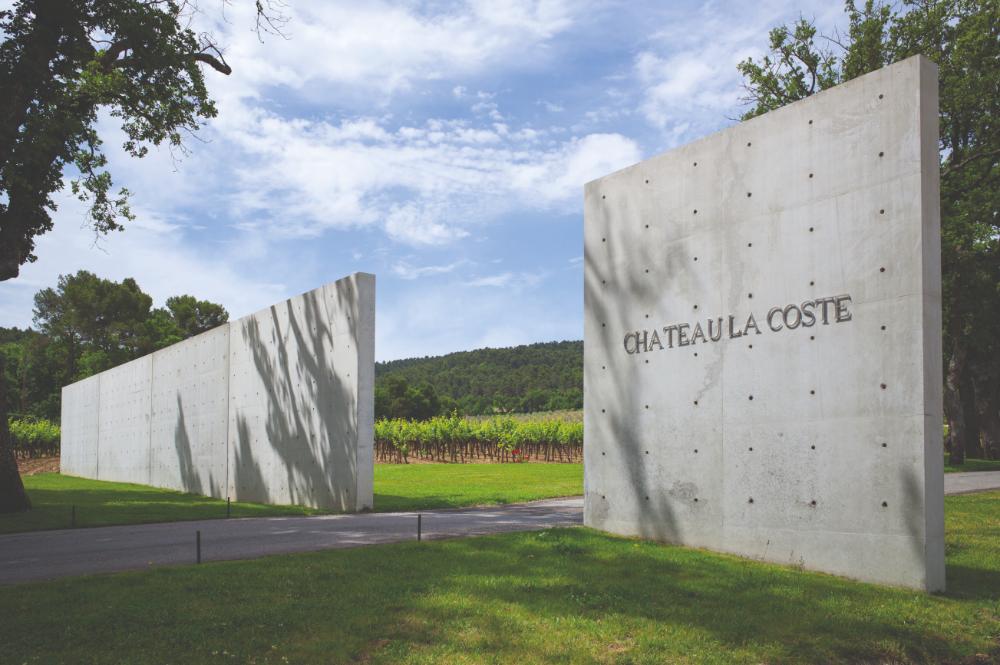
Like something out of a dream, Château La Coste, a veritable open-air museum, is reminiscent of castle parks where wealthy 18th-century French aristocrats built extravagant pavilions or corners of paradise for themselves – like Marie-Antoinette’s hamlet in Versailles. These dreamlike places were strictly private. But Château La Coste is open to the public and receives hundreds of visitors every day, of all types: families, couples, students, tourists, neighbours, experts and amateurs in wine and art.
To help visitors experience their estate, Patrick and Mara McKillen wanted them to be able to walk through it as they wish, at their own pace and in total freedom. Everyone can therefore follow their own paths, in no particular order, to discover the works where artists themselves often chose to install them: for example, Louise Bourgeois’ monumental ‘Crouching Spider’; Richard Serra’s gigantic metal plates; Michael Stipe’s ‘Foxes’; Tom Shannon’s strange ‘Drop’; Alexander Calder’s ‘Small Crinkly’, a mobile installed in a pool; Andy Goldsworthy’s ‘Oak Room’; Irish painter Sean Scully’s assemblage of stone blocks; or Renzo Piano’s exhibition/wine pavilion, half-buried in the vineyards.

Art, luxury hotel and spa
With good walking shoes and map in hand, it takes two to three hours to visit all the works. The most recent is an intriguing monumental installation just completed by French artist Prune Nourry. In nine months, she created a huge (27m long) sculpted pregnant woman, fused into the earth, whose womb offers shelter to visitors. Entitled ‘Mater Earth’, it has a temple-like belly which visitors can enter by ducking through a strategically placed opening just 130cm high. The steeply sloping floor then leads darkly into a cavity with moulded, organic contours and illuminated through the navel, a 250kg piece of glass, forming the dome’s keystone. Most remarkably, the installation, which was conceived in 2010, is visible from multiple vantage points and in different ways: from above and from within, and the work’s curves echo the shapes of the looming hills.
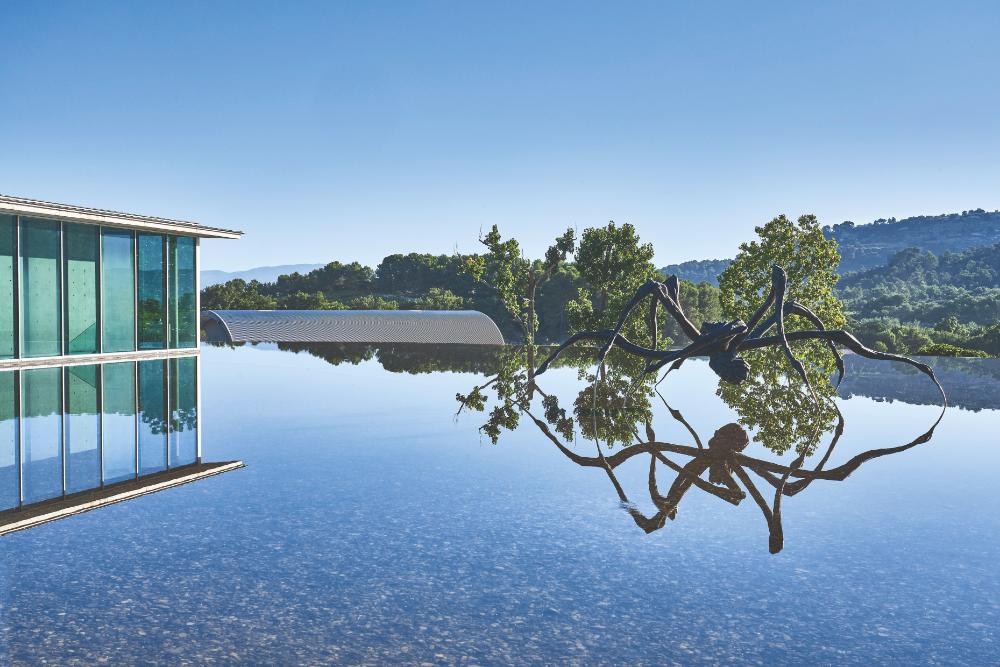
Of course, you can stay longer at Château La Coste and there’s no shortage of facilities. In addition to five exhibition galleries, shop, meeting places and wine cellar, the estate has six restaurants of different categories. In the Art Centre’s large, uncluttered space, a café offers simple, elegant cuisine based on seasonal products. A more gastronomic restaurant is under the direction of Argentinian chef Francis Mallmann, while Michelin-starred French chef Hélène Darroze heads the restaurant in Villa La Coste, a luxury hotel and spa with 28 suites combining contemporary architecture with natural regional materials. Decorations include works by artists such as Damien Hirst, Tom Shannon, Sean Scully, Le Corbusier and Louise Bourgeois: furniture is by Charlotte Perriand, Pierre Yovanovitch, George Nakashima and Jean Royère. Built into the hillside, bordering forest and vineyards, its terrace opens to the vast panorama of the estate with views to the Luberon and Mont Ventoux.

The greatest creators of the time
Luxurious but not ostentatious, Château La Coste, one of Newsweek’s Top 100 Destinations to Visit in the World, is a bit like Patrick McKillen. The 68-year-old businessman, who made his fortune in real estate and luxury hotels, and shuttles between France and Los Angeles, keeps a low profile: he rarely gives interviews, speaks only through his press office and, rather than showing off, prefers to show off his estate – so no photographs of the patron. However, we do know that it’s his sister Mara who’s at the origin of Château La Coste’s extraordinary metamorphosis. She was the first to move to the region in the 1990s, attracted by the natural landscapes, the charming villages, the local cuisine and the cultural abundance. Her brother began to visit her regularly.
Seduced by Provence, he asked Mara to find an ideal property where he could combine relaxation and business. It was also around this time that Patrick McKillen would drink wine for the first time in his life. After much searching, Mara decided on Château La Coste, a wine estate dating back to 1682. They were attracted to the main house, with its faded pink façade resembling less a château and more a country house.
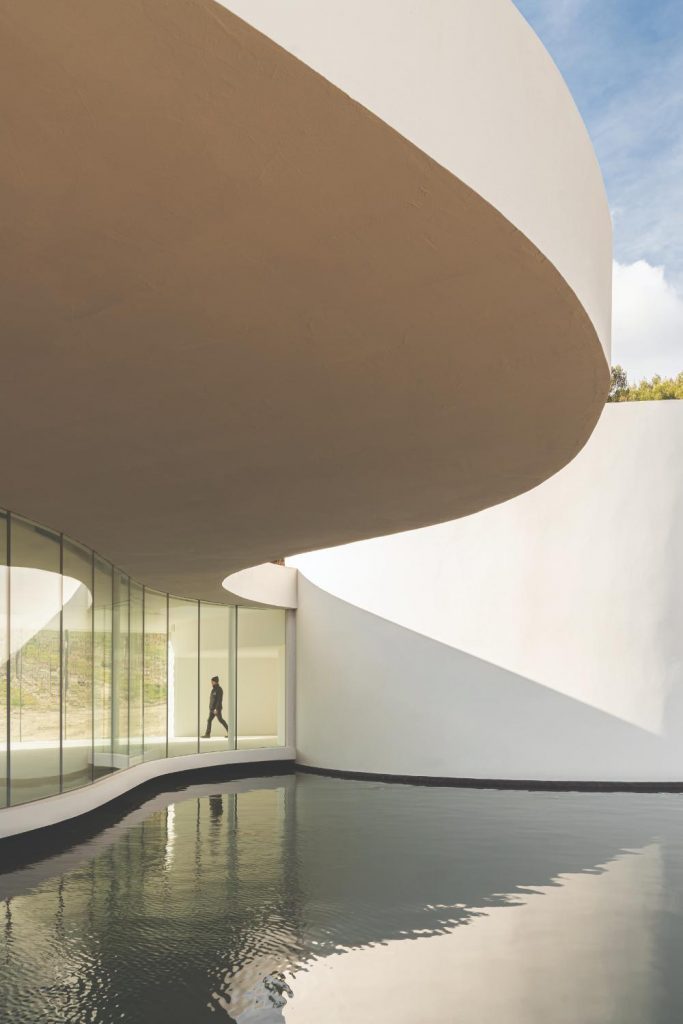
They bought it in 2002. To attract the public to Château La Coste, McKillen chose his other passions: art and architecture. In 2004, he invited his architect and artist friends to visit the vast natural spaces surrounding the property and encouraged them to imagine their future works here. This is how he commissioned French architect Jean Nouvel to create a new, ultra-modern, state-of-the-art winery, which was completed in 2008.
Over the years, the greatest artists of the times have proposed and installed their works throughout the estate. Also noteworthy is the music pavilion with its impressive wooden framework by Frank Gehry, the architect of the Guggenheim Museum in Bilbao and the Vuitton Foundation in Paris.

This impressive collection of architectural creations signed by the greatest names in the field continues to grow: last April, Château La Coste inaugurated a new pavilion which had been designed by Brazilian architect Oscar Niemeyer before his death in 2012. This was the artist’s last project in France. The building, named the Oscar Niemeyer Pavilion, is designed to host exhibitions and has an 80-seat auditorium. The estate has another posthumous architectural work: the
Drawing Gallery by Richard Rogers, the Briton who co-designed the Centre Pompidou in Paris with Renzo Piano. Rogers’ last project is a spectacular box-like structure cantilevered weightlessly over the wooded abyss, set in a bright orange metal frame.
“A unique place on Earth”
Along with architecture and gastronomy, viticulture, the primary vocation of the estate, is of course an important part of its activity and contributes to the international reputation of Château La Coste, Located on the northern edge of the Coteaux d’Aix-en-Provence appellation, the 130 hectares of vines on the estate produce several ranges of white, rosé and red wines. They’re sold on-site, regionally, in Paris, and also in Switzerland, Great Britain and the United States and like the works of art, they aim for excellence. In the same concern for harmony with nature, the vineyard, formerly organic, is in the midst of a conversion to biodynamic farming. In some plots, working the vineyards with horses has been reintroduced and, in spring, when pruning the vines, a flock of 200 sheep comes to graze on the grassy areas.
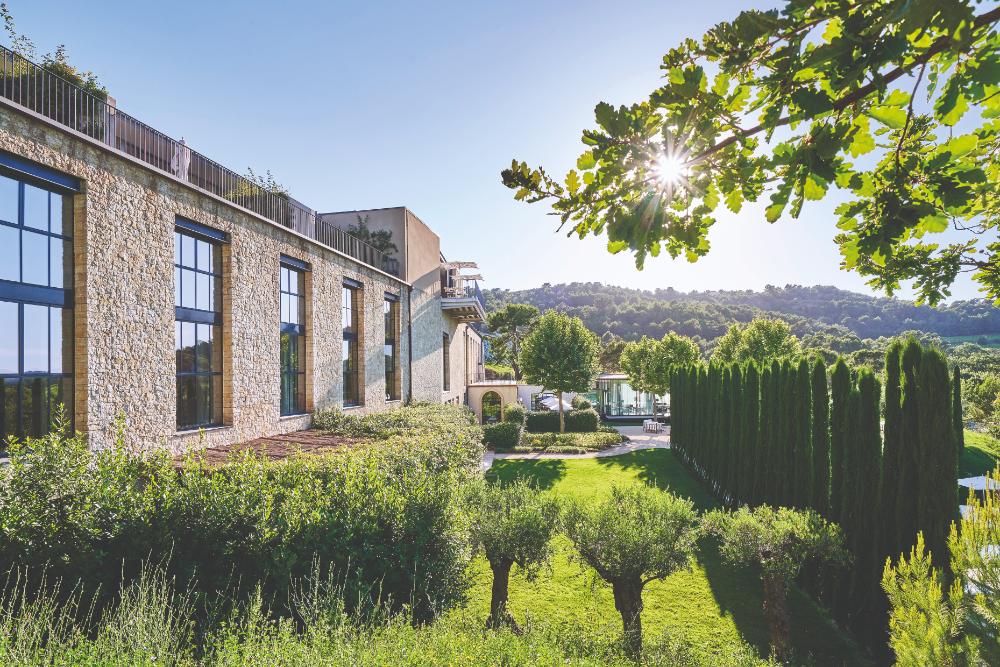
“Château La Coste is a unique place on Earth where so many amazing people have come together to install their creations and respect the magnificent Provençal landscapes and vines,” says Patrick McKillen, who has also replanted a dozen hectares of olive trees and makes olive oil.
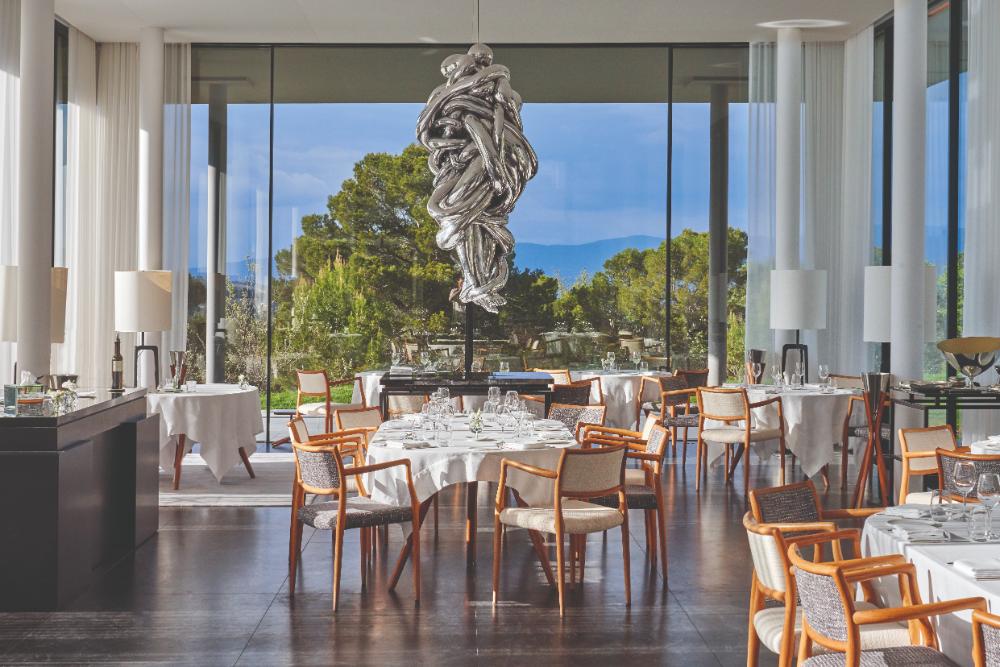
“Its land is marked by an agricultural and wine- making tradition dating back to Roman times and the paved paths, drystone walls, bridges or wells are evidence of this heritage.” He adds: “We have sought to preserve it.”
Find out more: Chateau La Coste
Latest Posts:
- Vallée de la Gastronomie: A Spring Tour
- 8 standout food festivals to enjoy this summer
- Dordogne’s Strawberry Festival
- Ukraine brings croissants to France
- Enjoy Michelin standard food on Air France this summer
Lead photo credit : Chateau La Coste - Tom Shannon, ©Richard Haughton
Share to: Facebook Twitter LinkedIn Email
More in architecture, Chateau, French wine, Wine

